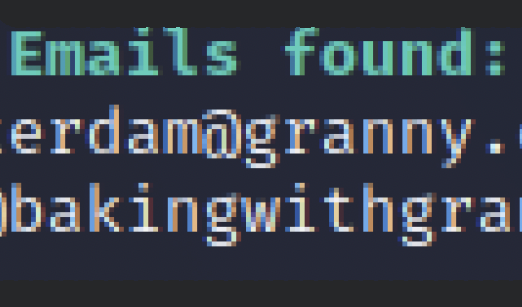
Critical infrastructure is the backbone of modern societies, and protecting this infrastructure is essential to ensure the stability of societies and economies. The electricity sector is one of the most critical infrastructures, and any disruption can have significant consequences. The threat landscape in this sector is constantly evolving. With the increasing sophistication of cyber-attacks and other threats, it has become essential to use innovative technologies to identify and mitigate them. Open Source Intelligence (OSINT) technologies have emerged and offer valuable tools for identifying and mitigating these threats. This article presents an in-depth overview of OSINT technologies and their applications in the protection of critical infrastructure, with an emphasis on the electricity sector. It discusses the vulnerabilities of the electricity sector, the types of OSINT technologies, and the benefits they provide. Case studies of successful applications of OSINT technologies in the electricity sector are presented to illustrate their effectiveness. This article also examines organizations challenges in implementing OSINT technologies, including technological, legal, and financial challenges. Finally, the article concludes by offering recommendations for successfully implementing OSINT technologies to protect critical infrastructure, particularly in the electricity sector. The insights offered in this article will be helpful for policymakers, security professionals, and anyone interested in protecting critical infrastructure.

Open-source technologies (OSINT) and Social Media Intelligence (SOCMINT) are becoming increasingly popular with investigative and government agencies, intelligence services, media companies, and corporations - but also for cybercriminals in email phishing. The amount of public and private data available is rising rapidly. OSINT and SOCMINT technologies use sophisticated techniques and special tools to analyze the continually growing sources of information efficiently. This work aims to find descriptive information using the OSINT tools available online. The target will be achieved with the help of dummy accounts that would help understand the tools and evaluate further different tools. Also, find out what tools are commonly used and what improvements can be made to make them more descriptive for analysts.

Open-source technologies (OSINT) and Social Media Intelligence (SOCMINT) are becoming increasingly popular with investigative and government agencies, intelligence services, media companies, and corporations. These OSINT and SOCMINT technologies use sophisticated techniques and special tools to efficiently analyze the continually growing sources of information. There is a great need for training and further education in the OSINT field worldwide. This report describes the importance of open source or social media intelligence for evaluating disaster management. It also gives an overview of the government work in Australia, Haiti, and Japan for disaster management using various OSINT tools and platforms. Thus, decision support for using OSINT and SOCMINT tools is given, and the necessary training needs for investigators can be better estimated.

Open-source intelligence is gaining popularity due to the rapid development of social networks. There is more and more information in the public domain. One of the most popular social networks is Twitter. It was chosen to analyze the dependence of changes in the number of likes, reposts, quotes and retweets on the aggressiveness of the post text for a separate profile, as this information can be important not only for the owner of the channel in the social network, but also for other studies that in some way influence user accounts and their behavior in the social network. Furthermore, this work includes a detailed analysis and evaluation of the Tweety library capabilities and situations in which it can be effectively applied. Lastly, this work includes the creation and description of a compiled neural network whose purpose is to predict changes in the number of likes, reposts, quotes, and retweets from the aggressiveness of the post text for a separate profile.

This paper presents a practical Open Source Intelligence (OSINT) use case for user similarity measurements with the use of open profile data from the Reddit social network. This PoC work combines the open data from Reddit and the part of the state-of-the-art BERT model. Using the PRAW Python library, the project fetches comments and posts of users. Then these texts are converted into a feature vector - representation of all user posts and comments. The main idea here is to create a comparable user's pair similarity score based on their comments and posts. For example, if we fix one user and calculate scores of all mutual pairs with other users, we will produce a total order on the set of all mutual pairs with that user. This total order can be described as a degree of written similarity with this chosen user. A set of "similar" users for one particular user can be used to recommend to the user interesting for him people. The similarity score also has a "transitive property": if $user_1$ is "similar" to $user_2$ and $user_2$ is similar to $user_3$ then inner properties of our model guarantees that $user_1$ and $user_3$ are pretty "similar" too. In this way, this score can be used to cluster a set of users into sets of "similar" users. It could be used in some recommendation algorithms or tune already existing algorithms to consider a cluster's peculiarities. Also, we can extend our model and calculate feature vectors for subreddits. In that way, we can find similar to the user's subreddits and recommend them to him.

Open Source Intelligence (OSINT) has come a long way, and it is still developing ideas, and lots of investigations are yet to happen in the near future. The main essential requirement for all the OSINT investigations is the information that is valuable data from a good source. This paper discusses various tools and methodologies related to Facebook data collection and analyzes part of the collected data. At the end of the paper, the reader will get a deep and clear insight into the available techniques, tools, and descriptions about tools that are present to scrape the data out of the Facebook platform and the types of investigations and analyses that the gathered data can do.